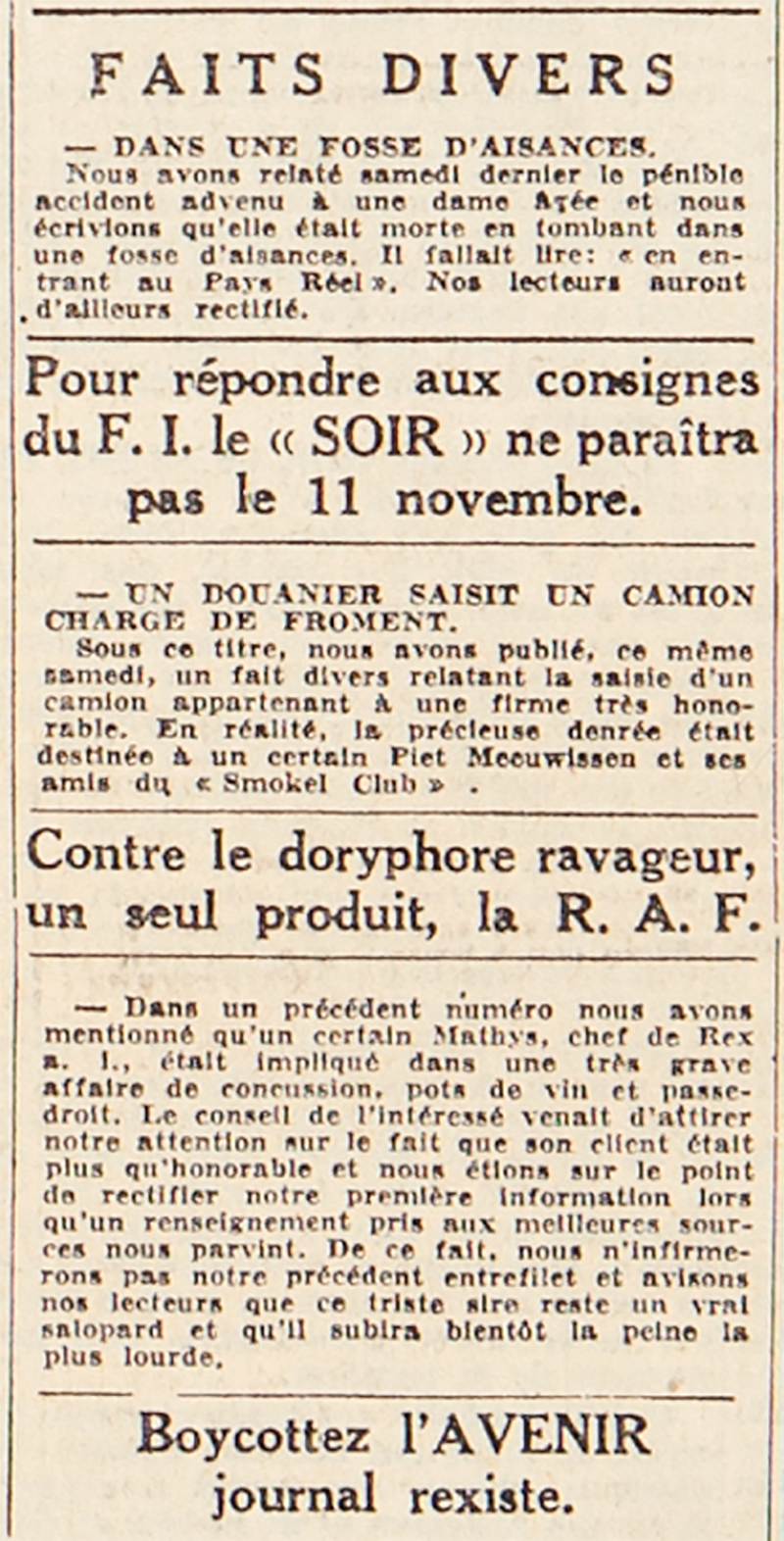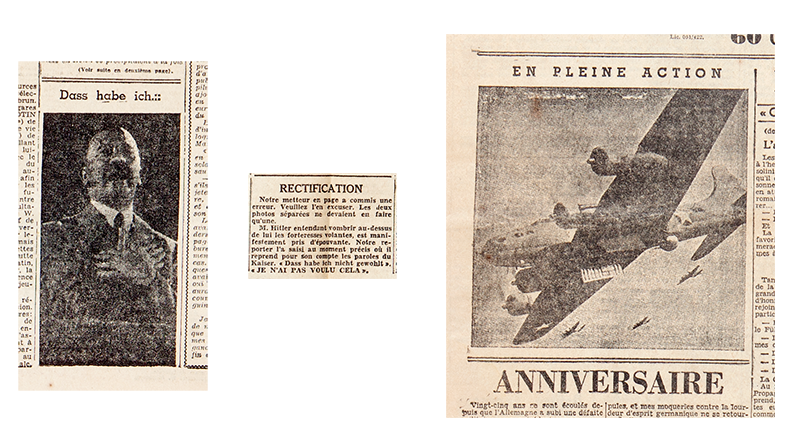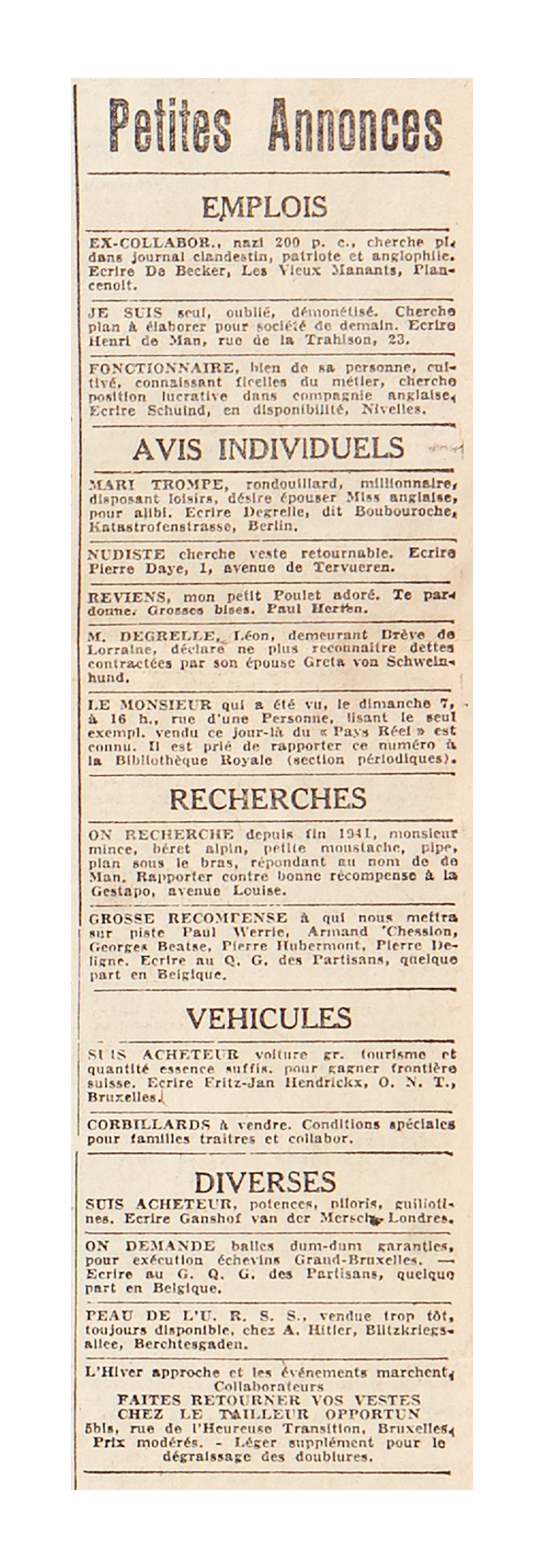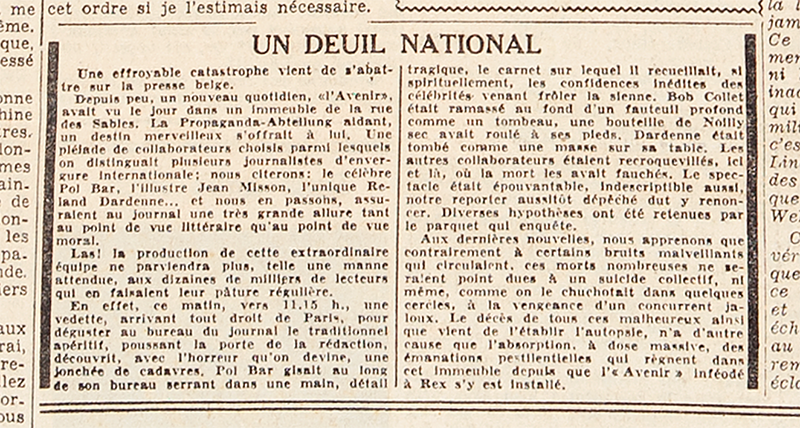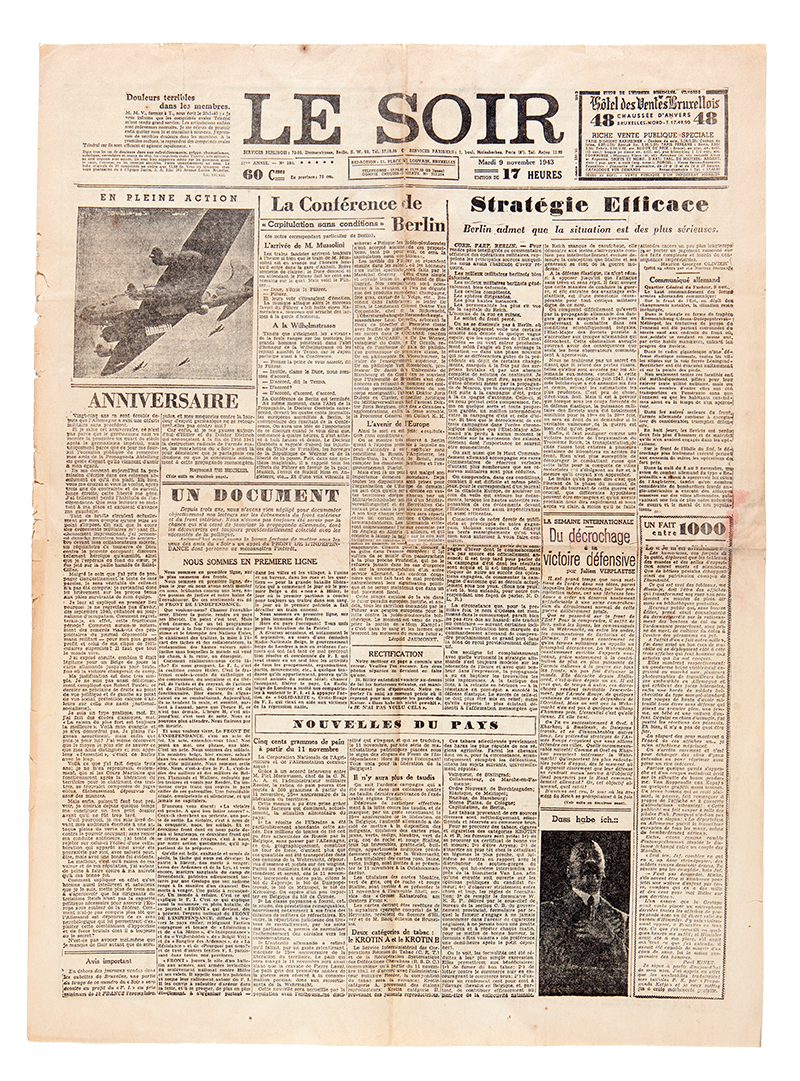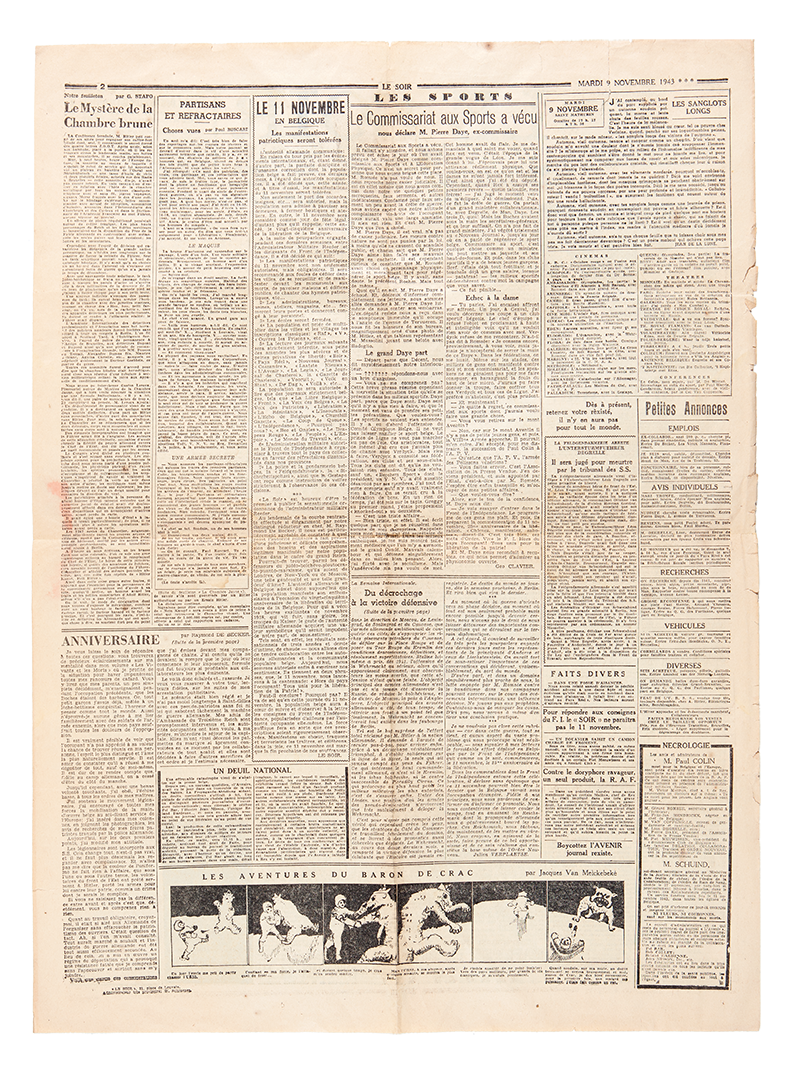Le Faux Soir
Le Faux Soir was a spoof edition of the Belgian newspaper Le Soir published on Nov. 9, 1943, by the Front de l’Indépendance, a Belgian resistance organization. Using humor and derision as weapons against the Nazi occupiers, Le
Faux Soir was, as well as being an act of resistance that cost the lives of some contributors, a demonstration of Belgian comedy and “zwanze,” the characteristic Brussels humor.
After secretly printing the newspaper, the Belgian resistance needed to ensure circulation, so a plan was launched to sabotage some Le Soir delivery vans. On November 9 at 4 p.m., distribution of Le Faux
Soir began. Bundles of 100 papers, tied with a banner explaining the absence of the usual number of copies, were dropped in kiosks where the people of Brussels were waiting for their newspapers. The issues sold quickly and without problems. Customers went away, started to read their newspapers, then stopped, suddenly. Glancing around, they’d quickly fold up the paper and rush off, astonished and eager to read the rest. In certain trams, to the joy and concern of other passengers, some bemused readers read extracts aloud. Everyone rushed to acquire a copy, just as deliveries of the real Le
Soir arrived at kiosks to the confusion of the salesmen. Certain outlets were unnerved and stopped selling Le
Faux
Soir. Others offered buyers a choice between the real and the fake one. Fifty thousand copies were printed.
One spread printed recto and verso in black ink, 43 x 59 cm.
One booklet, 21 x 29,7 cm, published in November 1993 by Le
Soir to celebrate the 50th anniversary of Le
Faux
Soir.
One book, 159 pages, entitled Le
Faux
Soir, by Marie Istas-Caporali, published by J.M Collet, 12 x 21 cm.
